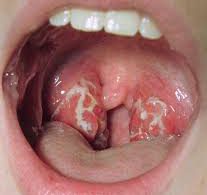Case 1
SR., a 22 year-old healthy female, three days before driving off to Colorado to begin her freshman year of college, awoke in the night at 2:30 a.m. and vomited. She then vomited every 45-60 minutes until 7:30 a.m. In between vomiting she slept. Emesis was clear with a slight yellow tinge; no blood. She had eaten nothing unusual the day before. She had had dinner at home with her father, who was fine. She had no fever, cramping, sweat, chills, trembling, wobbling or diarrhea. Her thirst was unremarkable. Her father called me at 9:00 a.m., while she was sleeping. “It must be a G.I. flu going around Dallas,” I thought as I prescribed one dose of Arsenicum album 200c from his home kit. This was the third or fourth case of vomiting that had begun after midnight that I had prescribed for in the last two days. Two of the others boarded an airplane ten hours after taking a dose of Arsenicum album 200c, quite recovered.
But not this one. Her father called 24 hours later. There was no more vomiting and no diarrhea, but she had a fever of 99.8 that had begun the evening before. The patient was sluggish, “punky,” and had no appetite all the day before. She tried to eat rice but her stomach was very uncomfortable after two bites. She then tried frozen fresh mango with the same result. She was weak, nauseated, sluggish, and was to leave for college in two days. Then her father mentioned something strange: her nausea was better if she moved around.
“Does she move around as in changing position, rotisserie-rolling?” I asked.
“No, her nausea gets worse the longer she stays seated, then she gets up and walks a bit, and feels better. But if she keeps on walking the nausea gets worse again, and she’d sit.”
She’d been doing this most of yesterday. The nausea was not aggravated or ameliorated by stooping, rising from bed, turning over in bed, or rising from a seat. There were five good symptoms here: vomiting clear fluid; vomiting after midnight; fever in the evening; nausea worse from sitting and better from walking. I analyzed the case using both Kent and Bonninghausen repertories (Figure 1 and 2): Pulsatilla appeared in first position with Rhus toxicodendron second. In the Bonninghausen analysis Rhus toxicodendron did not have the symptom of watery emesis, while Pulsatilla covered every symptom and had a higher polarity differential than Rhus toxicodendron. (see Editor’s Note to Ulrich Fischer’s article in this issue for more on polarity analysis)1. Six hours after one dose of Pulsatilla 200c, her father checked in: “She’s picked up!” he reported.
Figure 1: Analysis using Bonninghausen Therapeutic Pocketbook with Polarities
Figure 2: Analysis using ‘RadarOpus’
Already she was walking around, had more energy, the nausea was gone, and could hardly be kept back from eating quantities of different foods, which were not bothering her stomach at all.
One rubric I consulted in Kent was “Generalities, Contradictory and alternating states.” My reasoning was this: nausea worse from being still and better from moving around contradicts physiology, not to mention fluid mechanics. Jost Künzli marked several remedies in this rubric with a black dot; the rubric was valuable to him. I never asked him what the rubric meant. But now, in writing up this case, I read this rubric in a different lighand was a little puzzled by it. Is it not true, almost by definition, that many of the symptoms we classify as strange, striking, and peculiar have something contradictory about them, like a sore arm ameliorated by hard pressure and movement, or a chilly patient wanting cold drinks or to be uncovered, or a person famished during a flu? This rubric would not be so small, or so valuable, if it held all the remedies that produce a contradictory, contrary-to-reason, contrary-to-experience symptom. So perhaps it refers to remedies producing opposite symptoms in a prover or patient – coldness of the arm and heat of the arm, for example. But that is not the way I have used it over the years, among other reasons because very few complaints besides modalities and temperature sensations have opposites, and in that case the rubric refers to a very small set of symptoms. What is the opposite of a stitching pain, or of nausea?
The rubric began its American life in Hering’s 1836 translation of Jahr›s Handbook (with attached Repertory) as “Alternation of opposite compl.” and is found under the letter ‘A’ in Generalities. So perhaps the rubric is referring to a dual quality of opposite symptoms that alternate, so that the person is one moment awake, the next asleep, and these keep alternating. Or the person is howling in pain, then calmly talking because the pain is gone, and this goes back and forth. That makes sense, but this limited idea is not how I have used that rubric until now. Interestingly, that rubric continued under a different name, “Alternation of Contrary Complaints,” in the C. Lippe Repertory that was the successor to the Jahr/Hering repertory, and then disappeared until 1924. It did not appear in either the first or second edition of Kent’s Repertory (which was the successor to the C. Lippe Repertory), but only in the 3rd edition after Kent’s death. This edition was overseen by his widow Clara, incorporating extensive manuscript notes from Kent. The restored rubric was changed in wording to the name I mentioned above, which has been carried forward in all subsequent Kent-derived repertories. Significant, or just a curiosity? Does the 1920’s wording mean the same as the 1830’s wording? Did Kent, who almost certainly had help assembling the chapters of his huge repertory, not closely supervise this section of Generalities, and only caught the slip after the second edition came out? One thing we do know, in his personal copy of the C. Lippe Repertory that was the working copy (along with Lee’s Repertory of the Mind and Head) for his
first edition Repertory, he did not cross out or annotate this symptom.
I consulted this rubric in the present case because the rubric, “Stomach, Nausea, sitting aggravates,” seemed unduly small and incomplete to me. And I do not like to rely too heavily on amelioration rubrics, especially in chapters devoted to specific organs or parts, because I am not sure how complete they are. There is a reason why the provings in Chronic Diseases and Materia Medica Pura list five times as many aggravation symptoms as amelioration symptoms. Provers usually notice what prompts a discomfort to appear, and confirm that by stopping the action or position that triggered the pain to see if it stops. How then to differentiate the stopping of a pain from an ameliorating influence on the pain? The proving supervisor in looking over the prover’s record needs to think as follows: if you have a calf pain that appears when you walk and stops when you sit, is the symptom “calf pain on walking” or “calf pain ameliorated by sitting”? Certainly the former, possibly the latter, but that is not yet certain. For the supervisor it often would have required much more care, and for the prover much more observation, to establish a specific amelioration. Modalities that aggravate have been easier to establish, and are probably more complete, than the amelioration rubrics.
Case 2
C.K. a 6 year-old healthy girl on vacation in Park City, Utah, strolled through the town’s Sunday outdoor street fair with her family. They bought a few baskets of fresh raspberries and blueberries from the vendors, and the whole family ate them without first washing the fruit. That night she woke in the middle of the night from a bad dream (not described), then immediately had shaking and nausea, then painless diarrhea of “brown water.” Twice more that night she woke up because of watery brown, painless, diarrhea preceded by shaking, but without nausea. Since then, she had painless, watery brown, diarrhea, rarely lienteric, not massive or gushing, between 30 and 45 minutes after eating anything, however small. Even saltine crackers, or a fruit roll-up snack, would cause diarrhea, so that she was defecating six to seven times per day. Since the first night there had been only one other night when she woke from sleep needing to defecate. She had had no normal stools. This was now the ninth day. No cramps, no loss of appetite, no nausea or vomiting, good energy up until yesterday, good color and mood. In fact she was happy and enjoying her food. She just had this diarrhea after eating, and had had for nine days. No one else in her family had any G.I. symptoms. Her mother called Friday at 4:30 p.m. because now her energy seemed a bit less than usual and her face was starting to look a little thinner than normal. She returned home to Texas the previous day. I discussed the differential diagnosis with her: water-borne bacteria if the fruit were washed in a mountain stream; hand-borne bacteria from fruit handlers (including the possibility of oral-fecal route). I had a definite concern about parasites, specifically Giardia. The fact that no one else in family was sick did not rule out a contaminated berry or cherry: a patient of mine (in her prior medical history) cooked a large pot of jambalaya for many guests once, and spent the next three days hospitalized with violent C. difficile gastroenteritis, while no one else at the meal got sick. Apparently, she got the one bad shrimp. For this six year-old blueberry eater, Podophyllum peltatum 200c one dose from her kit was prescribed with instructions to call me Monday morning.
If she wasn’t at least eighty percent better, I’d order a stool sample for ova and parasites.
No call from her mother Monday, Tuesday or Wednesday. I called Thursday, doing my best not to show frustration at her lack of follow-up. “She’s great,” was the report. “We gave Podophyllum, one dose of 200c on Friday, and no diarrhea since. Worked perfect!” Stool pattern and form entirely back to normal, also her energy.
For travelers, if they only are able to carry a few remedies, the three G.I. remedies I advise are Nux–vomica, Arsenicum album, and Podophyllum. Nux vomica for overloaded stomach, for that morning-after, “I can’t believe I ate (or drank) all that stuff,” feeling. Arsenicum album for vomiting plus diarrhea, or vomiting alone especially when accompanied by cramps and marked thirst but can only tolerate sips at a time. I think of Podophyllum when there is painless diarrhea without vomiting in a traveler, whether it is in the jungles of Guatemala, on an African safari, or even fancy resorts where the water and food are different from home and there is any doubt about sanitation. By the time I took the present case the patient was back in town and I did not need to limit myself to three remedies, but I gave weight to the setting of the case being a distant locale with questionable hygiene. The initial shaking, nausea, and after-midnight onset suggested Arsenicum album, but with nine days of nothing but diarrhea, good energy, and normal appetite, I leaned to Podophyllum and it came through once again.
About the Author
Daniel Cook, MD, has practiced homeopathy in Dallas, Texas, for twenty years. After graduating Magna cum laude from St. Louis University School of Medicine, he studied homeopathy privately with Dr. Jost Kunzli in Switzerland in 1991 and 1992. He also studied with Dr. Will Klunker and Alain Naude, and has done extensive research in the Pierre Schmidt Library in Switzerland and the William Kirtsos Library in New York.
Thanks to Bill Kirtsos for his help In researching the repertory history of the rubric in Case 1.
This article was originally published in the American Journal of Homoeopathic Medicine, Volume 105, Number 4, Winter 2012.





